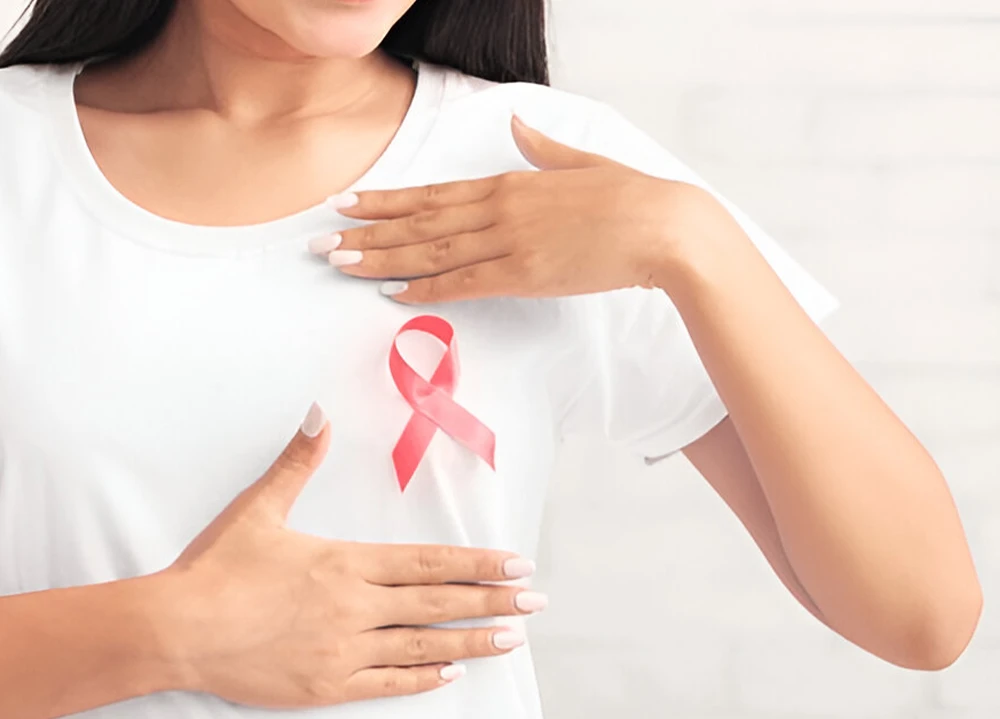

The Silent Risk: Could Your DNA Be Hiding a Breast Cancer Time Bomb?
- The Genetic Threat Most People Don’t See Coming
- Why Breast Cancer Risk Isn’t Always About Family History
- What These Breast Cancer Mutations Actually Do to Your Body
- Genetic Testing Is Simple, But Ignoring It Isn’t
- Early Breast Cancer Detection Saves Lives
- Overcoming the Biggest Myth Around Breast Cancer
- Order Your Online Genetic Test and Get Tested for Breast Cancer
You feel healthy. No lumps, no signs, no family stories passed down. But none of that means you’re clear. Some breast cancer risks start long before anything can be seen, touched, or felt. They can live in silence for decades, building quietly without warning or symptoms.
These risks begin in your DNA.
Every cell in your body carries a genetic instruction manual. If even one section is broken, your defenses can quietly fail. You won’t feel the shift. But deep inside, the conditions for cancer may already be forming. And unless you test for it, you won’t know it’s there.
The Genetic Threat Most People Don’t See Coming
Across the globe, breast cancer has become the most commonly diagnosed form of cancer in women. As of 2022, it accounted for over 11.6% of all new cancer cases worldwide, making it the most common cancer type of any kind for men or women.
While most cases are linked to aging, hormones, or lifestyle, 5% to 10% are caused by inherited mutations in genes that manage cell growth and repair (BreastCancer.org).
These mutations usually come from a parent, and once passed down, they live in every cell of your body. That means the risk is with you from birth. You can’t detect it with a physical exam, blood work, or standard imaging. You won’t feel any different.
But your body could already be working with weaker defenses, quietly allowing damage to build over time. And no one would know unless your genes are tested.
Why Breast Cancer Risk Isn’t Always About Family History
Not having a family history of breast cancer doesn’t mean you’re in the clear. One of the largest population-wide studies on genetic screening showed that about 50% of women who carry high-risk mutations had no significant family history of the disease at all.
These women wouldn’t have qualified for testing under traditional guidelines. And yet their DNA carried a threat they never knew existed.
This is why relying on family history alone leaves so many people exposed. Your relatives may never have been tested. Some may have died of other causes before cancer developed. Others may have passed on a mutation silently to you.
Genetic testing is the only way to find out if you’re carrying one of these silent red flags.
What These Breast Cancer Mutations Actually Do to Your Body
The most well-known inherited mutations linked to breast cancer affect genes like BRCA1, BRCA2, and TP53. These genes act like quality control systems. They repair DNA damage, control how cells divide, and stop the ones that grow too fast or live too long.
When a mutation weakens one of these systems, damaged cells start slipping through. Over time, those cells multiply. And eventually, one of them becomes cancer.
A recent review published in A Cancer Journal for Clinicians found that inherited mutations in BRCA1 or BRCA2 can lead to higher risks of aggressive breast cancer, especially before age 50. The most dangerous part? This damage often starts building years before any symptoms appear.
Genetic Testing Is Simple, But Ignoring It Isn’t
Genetic testing makes it easy to be proactive. You collect your DNA with a cheek swab and send it back in a prepaid envelope. The lab screens your sample for more than 50 cancer-related mutations, including the ones most closely tied to breast cancer.
You can skip clinic visits, insurance approvals, and symptom requirements. All you need is the willingness to uncover what your DNA is carrying. The entire process stays private, quick, and focused on giving you answers while there’s still time to act.
If your results reveal a mutation, a one-on-one session with a counselor helps you understand the impact. You’ll learn how your risk shifts, what actions to take, and how to move forward with a clear, personalized plan.
Early Breast Cancer Detection Saves Lives
Identifying breast cancer as early as possible gives you a much better chance of survival. For localized tumors that haven’t spread, the five-year survival rate is over 99%. But if detected late, that number drops fast, falling to 29% for stage 4 cases.
Most high-risk individuals who discover their mutation early are able to change the timeline:
- They start screening earlier and more often
- They use both MRI and mammography for better accuracy
- They explore risk-reducing medication or preventive surgery
- They notify relatives so they can test too
Knowing your genetic status opens up options that simply don’t exist once the disease takes hold.
Overcoming the Biggest Myth Around Breast Cancer
One of the biggest misunderstandings about breast cancer is the idea that it only shows up in people with symptoms or a known family history. In truth, inherited risk often spreads quietly, especially in younger women who appear healthy and have no warning signs on the surface.
Many people carry high-risk mutations for years while feeling completely fine, passing physical exams, and receiving normal results from routine checkups. This silence gives the illusion of safety, but the risk keeps moving forward. That’s why so many diagnoses feel sudden because the real signals were hidden in the DNA all along, waiting to be discovered.
That’s why Lifecode gives you the tools to find inherited cancer risk before it becomes a life-changing event. Testing is simple. Interpretation is clear. And the path forward is supported by real experts who’ve helped thousands of families understand their own biology.
You have more control than you think, but only if you’re willing to look.
Order Your Online Genetic Test and Get Tested for Breast Cancer
The earlier you act, the more you can do.
How to take the next step
- Visit the Lifecode website
- Book a free consultation with a genetic counselor
- Order your at-home testing kit
- Collect your DNA sample with a cheek swab
- Return your kit and wait for your personalized report
Once your results arrive, a Lifecode counselor will help you break down what they mean and guide you through your options, whether that includes lifestyle changes, upgraded screening, or family outreach.
Waiting gives cancer the first move. A simple test could give you the time and clarity to move first.

Can You Inherit Migraine Risk The Truth About Women’s Brain Health
Can You Inherit Migraine Risk The Truth About Women’s Brain Health The Genetic Link to Migraines, It Is More Than Just Bad Luck Why Women are More...


Unlocking Your Body’s Blueprint: Genetic Clues to Pregnancy Complications and Hypertension
Unlocking Your Body's Blueprint: Genetic Clues to Pregnancy Complications and Hypertension The Intricate Dance of Genes and Health Decoding Pregnancy Complications Through Genetics The Genetic Roots of...

Education: Bachelor of Pharmacy (B.Pharm) from the Tata Institute of Social Sciences (TISS), Mumbai Experience: Agarwal is a seasoned pharmacist with over 7 years of experience in the pharmaceutical field. She has worked in various settings, including hospital pharmacies and community clinics, where she has excelled in medication management, patient counseling, and clinical support. Agarwal is known for her expertise in drug therapy optimization and patient safety. In addition to her practical experience, she contributes to health journalism, focusing on pharmaceutical advancements and health policy, and is involved in research projects aimed at improving medication practices and health outcomes. is known for her expertise in drug therapy optimization and patient safety. In addition to her practical experience, she contributes to health journalism, focusing on pharmaceutical advancements and health policy, and is involved in research projects aimed at improving medication practices and health outcomes.


